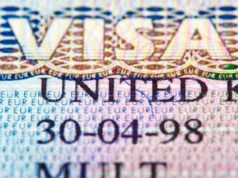
Introduction
Immigration and Naturalization Service (INS) is a federal agency that is responsible for enforcing immigration laws in the United States. It was created in 1933 as a part of the Department of Labor, and later it was transferred to the Department of Justice in 1940.
The INS mission is to provide immigration services, promote lawful immigration, and protect Americans from illegal immigrants. INS also manages the process of naturalization, which is the legal process of becoming a U.S. citizen.
In this article, we will explore the history of INS, the responsibilities of the agency, and recent changes that have been made to its operations.
History of Immigration and Naturalization Service (INS)
Immigration and Naturalization Service (INS) was created in 1933 as a part of the Department of Labor under President Franklin D. Roosevelt. Its responsibilities were to regulate the entry of immigrants and enforce immigration laws.
In 1940, INS was transferred to the Department of Justice, and its responsibilities were expanded to include naturalization, which is the process of becoming a U.S. citizen.
During World War II, INS was responsible for the internment of Japanese Americans, who were relocated to detention camps after the bombing of Pearl Harbor. This was a controversial decision that many saw as a violation of civil rights.
Throughout the years, INS faced criticism for its handling of immigration issues. In 2003, the agency was abolished, and its responsibilities were transferred to three different agencies under the new Department of Homeland Security.
Responsibilities of Immigration and Naturalization Service (INS)
The primary responsibility of INS was to enforce immigration laws in the United States. This included regulating the entry of immigrants, deporting illegal immigrants, and ensuring that immigrants were not a threat to national security.
INS was also responsible for managing naturalization, which is the legal process of becoming a U.S. citizen. This included reviewing citizenship applications, conducting interviews, and administering tests.
In addition, INS provided immigration services to immigrants, including issuing visas, work permits, and green cards. INS also oversaw the refugee and asylum process for those seeking protection in the United States.
Changes to Immigration and Naturalization Service (INS)
In 2003, INS was abolished and its responsibilities were transferred to three different agencies under the new Department of Homeland Security. The three new agencies were U.S. Citizenship and Immigration Services (USCIS), Immigration and Customs Enforcement (ICE), and Customs and Border Protection (CBP).
U.S. Citizenship and Immigration Services (USCIS) is responsible for managing the naturalization process and providing immigration services. This includes reviewing citizenship applications, conducting interviews, and issuing visas, work permits, and green cards.
Immigration and Customs Enforcement (ICE) is responsible for enforcing immigration laws by identifying and removing illegal immigrants and preventing human trafficking. ICE also investigates and prosecutes immigration-related crimes.
Customs and Border Protection (CBP) is responsible for securing the U.S. borders by preventing illegal immigration and drug smuggling. CBP also conducts inspections at airports and seaports to prevent the entry of dangerous goods and people.
Recent Developments in Immigration Policy
In recent years, immigration policy has been a contentious issue in the United States. The Trump administration implemented a number of controversial immigration policies, including the separation of families at the border and the ban on travel from several predominantly Muslim countries.
The Biden administration has taken steps to reverse some of these policies and make changes to the immigration system. The administration has proposed a pathway to citizenship for undocumented immigrants and has promised to overhaul the asylum system.
In March 2021, the Biden administration introduced an immigration bill that would create a pathway to citizenship for the estimated 11 million undocumented immigrants living in the United States. The bill would also increase funding for border security and invest in the processing of asylum applications.
The administration has also taken steps to address the backlog of immigration cases. In June 2021, USCIS announced a plan to expedite the processing of green card applications for family members of U.S. citizens.
Conclusion
Immigration and Naturalization Service (INS) played an important role in enforcing immigration laws and managing the naturalization process in the United States. In 2003, the agency was abolished and its responsibilities were transferred to three different agencies under the new Department of Homeland Security.
In recent years, immigration policy has been a contentious issue in the United States. The Trump administration implemented a number of controversial immigration policies, while the Biden administration has taken steps to reverse some of these policies and make changes to the immigration system.
Through these changes, the United States remains a country that welcomes immigrants who want to contribute to the success of our nation. Immigration will continue to be an important issue, and it is essential that we have policies that balance our need for security with our commitment to fairness and justice.
A Guide to the U.S. Immigration and Naturalization Service
The United States Immigration and Naturalization Service, which is now known as the Legacy Immigration and Naturalization Service, was an agency that was created on June 10, 1933. The Immigration and Naturalization Service stopped operating under that name on March 1, 2003 and became the Legacy INS, which was composed of the U.S. Immigration and Customs Enforcement, the U.S. Citizenship and Immigration Service, and the U.S. Customs and Border Protection.
The purpose of the Immigration and Naturalization Service was to protect and enforce laws regarding naturalization, controlling aliens from illegally entering into the country, preventing individuals from receiving benefits such as unemployment or social security by individuals if they were ineligible for such benefits, and investigating, detaining, and deporting illegal immigrants who were residing in the United States.
Functions of the Immigration and Naturalization Service
The two main functions of the Immigration and Naturalization Service that are of interest are its immigration services, as well as patrolling the borders of the United States
Immigration Process
The Immigration and Naturalization Service works to maintain approximately 250 ports of entry into the country over 8,000 miles of borders. Individuals who want to emigrate into the country must go through these ports and undergo inspection by INS agents. There are different procedures for dealing with the entry of immigrants who want to move to the United States, for those seeking asylum, and nonresidents who want to study in the country.
Individuals who want to stay in the United States as legal permanent residents must be issued an Alien Registration Card (often called a green card) by the Immigration and Naturalization Service. This Green Card allows aliens who have permanent resident status to travel between the United States and other countries freely, as long as they keep their permanent home within the United States.
This card is the first step towards receiving American citizenship. Aliens who have had this Green Card for five years can apply for citizenship and if accepted, can be sworn in and become naturalized citizens. More information on immigration to the United States can be found through the USCIS branch of the Immigration and Naturalization Service.
Controlling United States Borders
The United States government has a quota system that controls the number of green cards issued annually. Because of this restricted quota, there is a steady stream of illegal or undocumented aliens who come into America and work in low-paying jobs that are offered by unprincipled employers.
The Immigration and Naturalization Service works to limit the amount of illegal aliens who come into the country through the through its U.S. Customs and Border Protection. They secure the borders by sea, land, and air. The Immigration and Naturalization Service also works to uncover circumstances of exploitation of these aliens and imposes harsh criminal penalties for doing so.
The Immigration and Naturalization Service also tries to identify and remove criminal aliens the country. This anyone those who have has a criminal record from other countries, or those who try to subvert the American government.





























